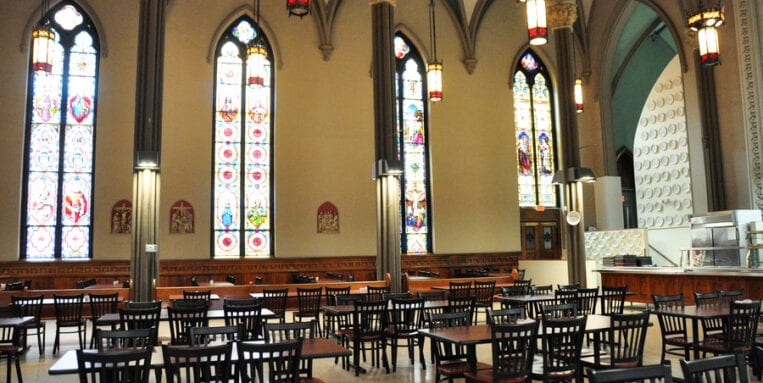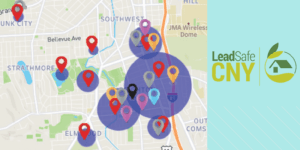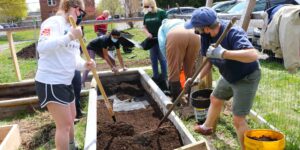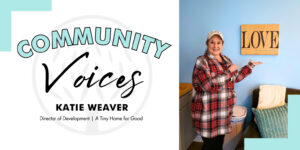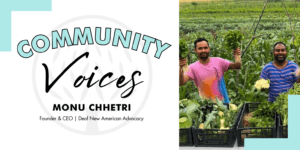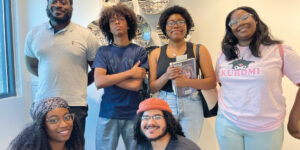When Gracie Barney began her first job out of college last year as the volunteer and guest services coordinator for the Samaritan Center, she was looking forward to helping those in need.
She had recently graduated and was feeling a sense of displacement until she found the comforting feeling of home at the Center. Barney got to know a visitor named James who was also looking for a feeling of belonging. He was living in a shelter and had no clothing or a job.
“I was feeling really uneasy as I entered the ‘real world,’” said Barney. “When I started working at the Center, I felt an instant connection to James, realizing that although we came from different backgrounds, we had arrived at the same place and could count on each other.”
Barney played a crucial role in helping get James back on his feet, which began with him visiting for daily hot meals. Eventually, he was utilizing the Center’s case management support and guest services to find a job and an apartment. James is just one example of the lives changed at this soup kitchen. Thousands of underprivileged members of the Central New York community have been served there since it was established in 1981. The Center has grown into an effective organization that serves nutritious meals 365 days a year to the food insecure. A small staff bolstered by more than 800 volunteers make it possible to get the 3,000 meals per week prepped and served without a hitch.
The Samaritan Center offers visitors breakfast five days per week and a dinner meal seven days a week. With economic and social pressures from the rising costs of housing, transportation, food, health care, and heating fuel, many individuals have been left with little to no means to purchase food. This has caused an increasingly larger population of those who must seek assistance from private sources of food in order to obtain minimum standards of nutrition. The Samaritan Center realized a larger space would be necessary to continue operating successfully and accommodate this growing need.
The Center recently moved from its previous location in the basement of St. Paul’s Episcopal Cathedral downtown to a new, larger space at the former St. John the Evangelist Church on Syracuse’s Northside. Executive Director Mary Beth Frey has seen a major difference.
“Our move to the Northside allows us to reach a wider area of the community,” said Frey. “The new building is much larger and is handicap accessible, which our previous location was not.”
The former church has provided the Center with additional space and a parking lot. The parking area makes it easier for food delivery truck drop-offs and for staff and volunteers who drive to the Center. With incredible stained glass windows and beautifully crafted lighting fixtures lining the walls, the building functions as a hopeful refuge for many. In the Center’s previous location, families often had to separate when eating because of the limited space. A Community Foundation grant helped the Center build out a designated family eating space in its new home.
Visitors not only dine in this area, but are also offered access to an additional play and reading area, and a stretch of cubbies to store personal items during meals.
“It was really important for us to create a space where different families can eat together, share experiences and skills, and become their own organic support,” said Frey. “We wanted families to feel comfortable and have the opportunity to find additional education and information services.”
The Center’s move has increased its capacity to provide meals, but also to support skill development with direct case management and human service agencies on site. These added activities provide visitors with the resources necessary to move toward self-sufficiency and decreased reliance on emergency food services.
“We set up education opportunities here so that people will know about where to go for support,” said Frey. “We ultimately want to give these folks the boost that they need to develop and position themselves for future success and independence. “
